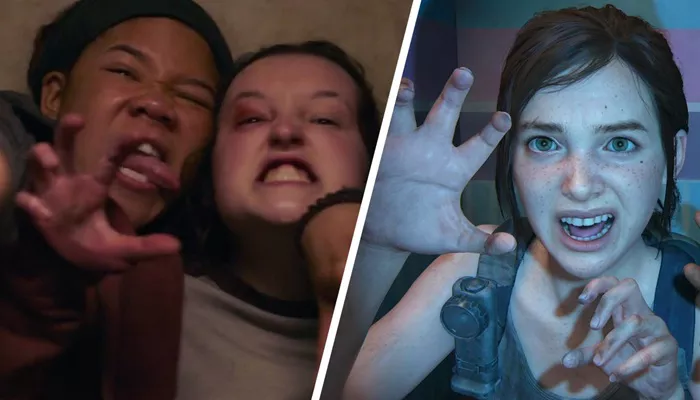The seventh episode of The Last of Us Season 2 has sparked a lively discussion among fans and critics about how the show adapts its source material—the highly acclaimed video game series. Both the game and the television adaptation explore a post-apocalyptic world filled with danger, complex characters, and emotional depth, but differences in storytelling, pacing, and character development create unique experiences in each medium. This article delves into the contrasts and similarities between Episode 7 of the show and its game counterpart, examining how the adaptation handles key moments, themes, and character arcs.
Storytelling and Pacing: More Than Just Replaying the Game
The original game of The Last of Us is known for its intense, immersive narrative that combines exploration, survival, and deeply personal moments. The television adaptation, while faithful to many plot points, expands and alters scenes to better suit episodic storytelling and the expectations of a broader audience.
Episode 7 exemplifies this approach. The show takes more time to develop side characters and introduces new dialogue and subplots that were either condensed or absent in the game. This extra depth provides viewers with a richer understanding of motivations and relationships. In contrast, the game’s pacing is often more urgent, focusing on gameplay mechanics intertwined with narrative progression.
The differences in pacing influence how tension builds in each version. The show’s slower pace allows for emotional beats to resonate more fully, while the game’s real-time action sequences maintain a steady sense of immediacy. Both methods succeed in their context but create different viewer experiences.
Character Portrayals: Nuances in Performance and Development
One of the most debated aspects of Episode 7 is how the show portrays its characters compared to the game. The actors bring new interpretations to familiar faces, adding layers of nuance through performance that are sometimes absent in the game’s more limited animation and voice acting.
For example, Joel and Ellie’s relationship continues to be central, but the show delves deeper into their emotional vulnerabilities. Subtle facial expressions, pauses, and interactions give the audience insights that players might infer but never directly witness. Secondary characters also receive expanded screen time, allowing for more complex portrayals that add texture to the story world.
However, some fans feel certain characters in the show deviate from their game counterparts, leading to mixed reactions. These changes reflect the adaptation’s intention to make characters relatable in a different medium, balancing fidelity with creative license.
Visual and Atmospheric Differences
Visually, the television series benefits from real-world locations, practical effects, and cinematic techniques that bring a gritty realism to the post-apocalyptic setting. The game, though visually impressive for its time, relies on digital artistry and player-controlled camera angles, which create a different atmosphere.
Episode 7’s scenes showcase detailed set designs and lighting that heighten mood and tone. The subtle use of color grading and naturalistic sound design immerse viewers in a tangible environment. Meanwhile, the game’s visuals are more stylized, aiming to enhance gameplay and narrative clarity.
These differences affect how tension and suspense are conveyed. The show can linger on quiet, intimate moments, while the game uses interactive elements to keep players engaged and emotionally invested.
Key Scene Adaptations and Their Impact
Several pivotal scenes in Episode 7 reveal how the show balances loyalty to the source material with the need for fresh storytelling. Iconic moments are recreated with fidelity, but the series often adds new dialogue or shifts perspectives to deepen emotional impact.
For instance, confrontations between main characters are sometimes extended or reimagined to explore motivations more explicitly. The show also highlights themes such as trust, survival, and loss with added subtlety, sometimes through visual storytelling rather than dialogue.
These creative choices often enhance the narrative for television audiences but occasionally risk alienating purist fans who prefer the original game’s straightforward approach. Nonetheless, the episode successfully captures the spirit and core messages of the story.
Fan Reactions and Critical Reception
The reception to Episode 7 has been generally positive, with praise for its character development, performances, and production values. Critics commend the show’s ability to translate an interactive experience into a compelling, passive narrative format.
However, debates continue among fans regarding fidelity versus adaptation. Some appreciate the fresh perspectives and deeper dives into character psyches, while others miss the pacing and interactivity unique to the game. These discussions highlight the challenges of adapting beloved video games into other media.
Overall, the episode serves as an example of how adaptations can both honor their source material and reinvent elements to suit a different artistic vision.
Episode 7 of The Last of Us Season 2 offers a thoughtful reinterpretation of the game’s narrative, balancing faithfulness with innovation. While differences in storytelling, character portrayal, and visual style are evident, the core themes of survival, human connection, and moral ambiguity remain intact. For fans of the game and newcomers alike, this episode provides a compelling viewing experience that invites reflection on how stories evolve across media.
Related Topics
- Netflix’s Sirens Offers Glamour, Intrigue, and Uneven Drama
- Netflix’s Sirens Delivers a Star-Studded, Addictive Cult Drama
- The Bay and Marsha Thomason Nominated for National TV Awards

